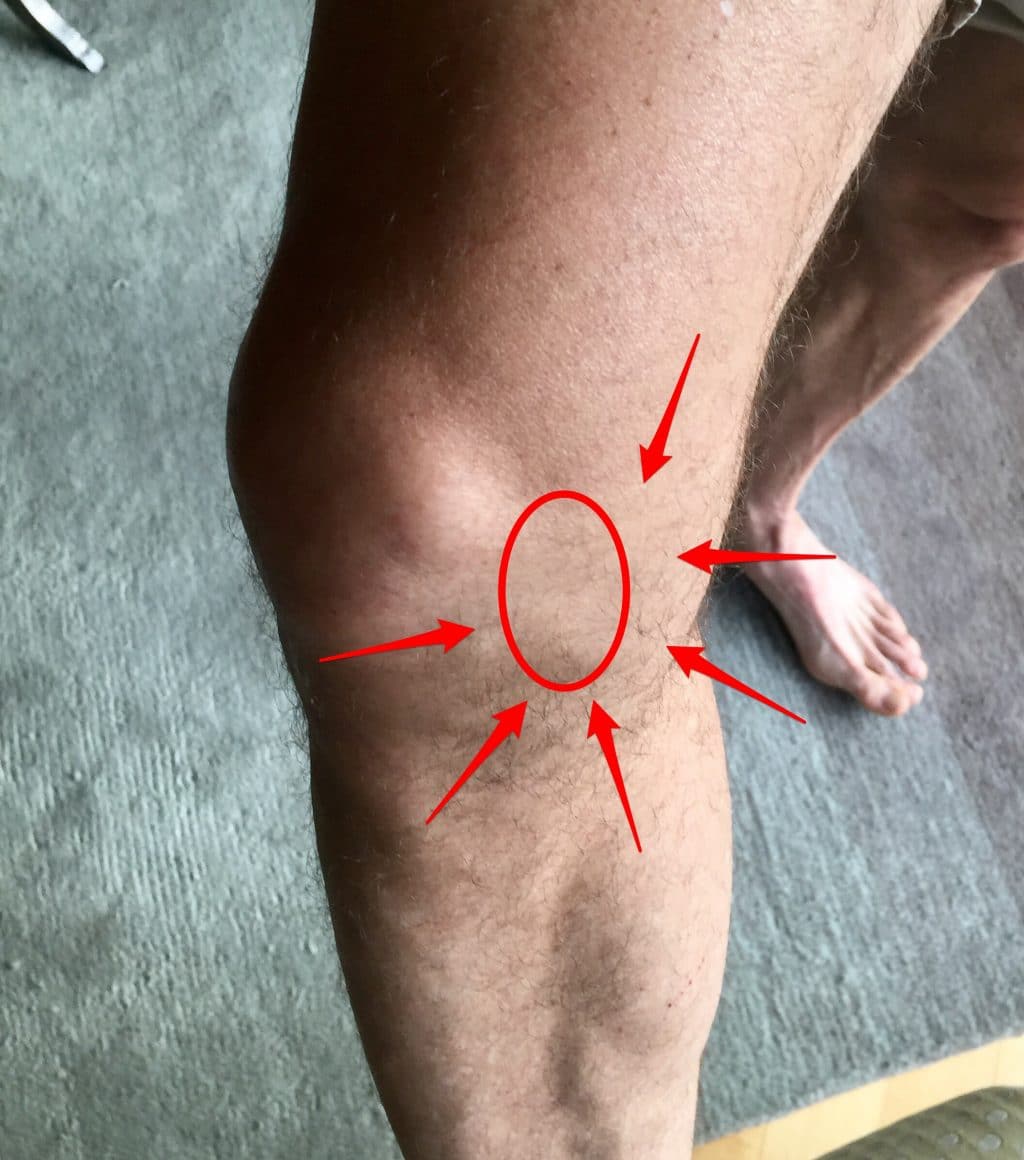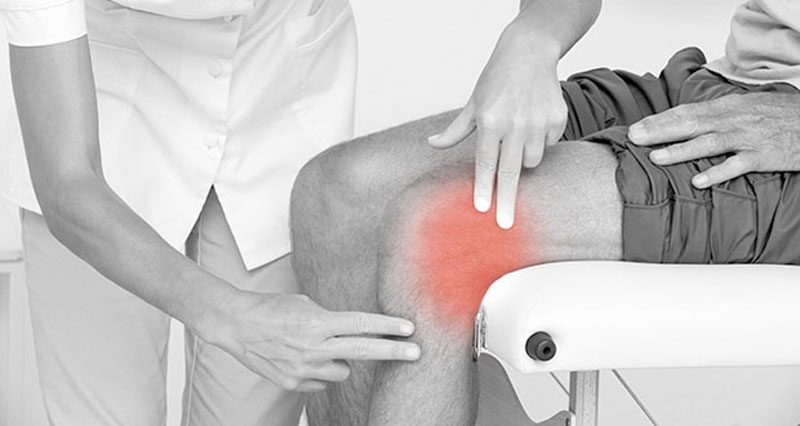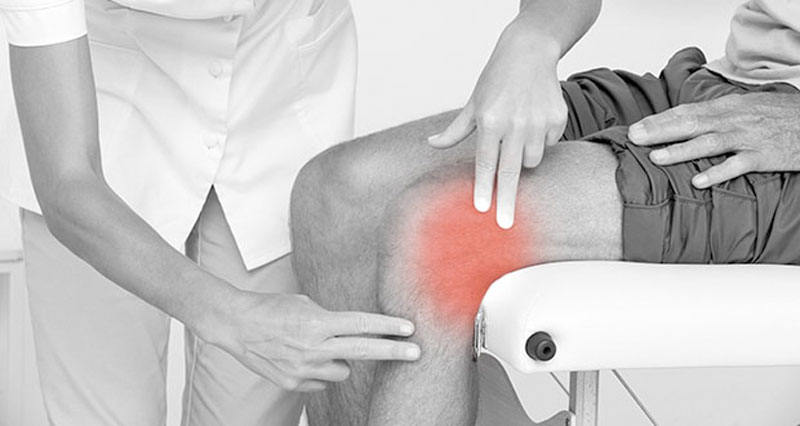Identifying the Causes of Burning Pain on the Side of Your Knee
Burning pain on the side of the knee can be a debilitating condition that affects one’s ability to perform daily activities. This type of pain can be caused by a variety of factors, including iliotibial (IT) band syndrome, meniscal tears, and osteoarthritis. Accurate diagnosis is crucial in determining the appropriate treatment for this condition. In this section, we will discuss each of these causes in detail and provide insights into how healthcare professionals diagnose and treat burning pain on the side of the knee.
IT band syndrome is a common cause of burning pain on the side of the knee. This condition occurs when the IT band, a thick band of tissue that runs from the hip to the knee, becomes inflamed or irritated. This inflammation can cause a sharp, burning pain on the outside of the knee, especially during physical activity. IT band syndrome is often caused by overuse or poor running form, and can be treated with physical therapy, stretching exercises, and pain relief techniques.
Meniscal tears are another common cause of burning pain on the side of the knee. The meniscus is a cartilage structure in the knee joint that acts as a shock absorber. When this cartilage is damaged, it can cause pain, swelling, and stiffness in the knee. Meniscal tears can be caused by sudden trauma, such as a sports injury, or by degenerative changes that occur with age. Diagnosis of meniscal tears typically involves a physical examination and imaging tests, such as an MRI. Treatment may include physical therapy, pain relief medication, or surgery.
Osteoarthritis is a degenerative joint disease that can also cause burning pain on the side of the knee. This condition occurs when the cartilage that cushions the joint breaks down, leading to bone-on-bone contact. Osteoarthritis can cause pain, stiffness, and swelling in the knee, and can make it difficult to perform daily activities. Diagnosis of osteoarthritis typically involves a physical examination and imaging tests, such as an X-ray or MRI. Treatment may include pain relief medication, physical therapy, or joint replacement surgery.
In order to accurately diagnose the cause of burning pain on the side of the knee, healthcare professionals typically conduct a thorough physical examination and may order imaging tests, such as an X-ray, MRI, or CT scan. These tests can help healthcare professionals visualize the knee joint and identify any structural damage or abnormalities. Based on the results of the examination and imaging tests, healthcare professionals can develop a personalized treatment plan that addresses the underlying cause of the pain.
How to Alleviate Burning Pain on the Side of Your Knee: Effective Treatment Methods
Burning pain on the side of the knee can be a frustrating and debilitating condition, but there are several treatment options available to help alleviate the pain. In this section, we will provide an overview of the different treatment methods for burning pain on the side of the knee, including physical therapy, stretching exercises, and pain relief techniques. It is important to consult a healthcare professional for personalized advice and to determine the most appropriate treatment plan for your specific condition.
Physical therapy is a common treatment option for burning pain on the side of the knee. A physical therapist can create a customized exercise program to help strengthen the muscles surrounding the knee, improve flexibility, and reduce pain. Physical therapy may include exercises such as quad sets, straight leg raises, and hamstring curls. These exercises can help improve knee stability and reduce the risk of injury.
Stretching exercises are also an important part of treating burning pain on the side of the knee. Tight muscles can put extra stress on the knee joint, leading to pain and inflammation. Regular stretching can help improve flexibility and reduce the risk of injury. Some effective stretches for burning pain on the side of the knee include the IT band stretch, the calf stretch, and the quad stretch.
Pain relief techniques can also be effective in managing burning pain on the side of the knee. These techniques may include ice, heat, or electrical stimulation. Ice can help reduce inflammation and numb the pain, while heat can help relax muscles and improve circulation. Electrical stimulation can also help reduce pain and promote healing by stimulating the nerves in the knee.
Other treatment options for burning pain on the side of the knee may include pain medication, corticosteroid injections, or surgery. Pain medication may include over-the-counter options such as acetaminophen or nonsteroidal anti-inflammatory drugs (NSAIDs), or prescription options such as opioids. Corticosteroid injections can help reduce inflammation and pain, while surgery may be necessary for severe or persistent cases of burning pain on the side of the knee.
It is important to consult a healthcare professional for personalized advice and to determine the most appropriate treatment plan for your specific condition. A healthcare professional can help you develop a comprehensive treatment plan that addresses the underlying cause of the pain and helps you manage your symptoms effectively.
Preventing Burning Pain on the Side of Your Knee: Expert Recommendations
Burning pain on the side of the knee can be a debilitating condition, but there are several measures individuals can take to prevent its onset. In this section, we will discuss the expert recommendations for preventing burning pain on the side of the knee, including maintaining a healthy weight, practicing proper running form, and gradually increasing exercise intensity. We will also highlight the importance of proper warm-up and cool-down routines in reducing the risk of injury.
Maintaining a healthy weight is one of the most effective ways to prevent burning pain on the side of the knee. Excess weight can put additional stress on the knee joint, leading to pain and inflammation. By maintaining a healthy weight, individuals can reduce the risk of knee pain and other related health conditions.
Real Products for Managing Burning Pain on the Side of Your Knee: A Closer Look
Burning pain on the side of the knee can be a challenging condition to manage, but there are several products available that can help alleviate the pain and promote healing. In this section, we will introduce some of the most effective products for managing burning pain on the side of the knee, including knee braces, compression sleeves, and pain-relieving creams. We will explain the features and benefits of each product, and provide recommendations based on user reviews and expert opinions.
Knee Braces
Knee braces are a popular option for managing burning pain on the side of the knee. They provide support and stability to the knee joint, helping to reduce pain and inflammation. There are several types of knee braces available, including compression braces, hinged braces, and wraparound braces. Compression braces are designed to provide gentle compression to the knee joint, helping to reduce swelling and promote healing. Hinged braces provide additional support and stability to the knee joint, making them a good option for individuals with more severe knee pain. Wraparound braces are adjustable and can be worn on either the left or right knee, making them a versatile option for managing burning pain on the side of the knee.
Compression Sleeves
Compression sleeves are another effective option for managing burning pain on the side of the knee. They provide gentle compression to the knee joint, helping to reduce swelling and promote healing. Compression sleeves are made from breathable, moisture-wicking materials, making them comfortable to wear during physical activity. They are also lightweight and easy to wear under clothing, making them a convenient option for managing burning pain on the side of the knee.
Pain-Relieving Creams
Pain-relieving creams can also be effective in managing burning pain on the side of the knee. These creams contain active ingredients such as menthol, capsaicin, or camphor, which help to reduce pain and inflammation. They are applied directly to the skin, providing localized relief to the affected area. Pain-relieving creams are a good option for individuals who prefer not to wear a brace or sleeve, or for those who need relief on-the-go.
When choosing a product for managing burning pain on the side of the knee, it is important to consider the severity of the pain, the underlying cause, and any personal preferences or needs. It is also important to consult a healthcare professional for personalized advice and to ensure that the product is safe and effective for your specific condition.
Living with Burning Pain on the Side of Your Knee: Coping Strategies and Support
Living with chronic knee pain can be challenging, both physically and emotionally. Burning pain on the side of the knee can impact your daily activities, relationships, and overall quality of life. It is important to seek support from healthcare professionals, friends, and family members to help you cope with the condition. In this section, we will discuss the emotional and psychological impact of living with chronic knee pain, and provide strategies for coping with the condition.
The Emotional Impact of Chronic Knee Pain
Chronic knee pain can have a significant emotional impact on individuals, leading to feelings of frustration, anxiety, and depression. The pain and limitations associated with the condition can make it difficult to perform daily activities, leading to a sense of isolation and decreased quality of life. It is important to acknowledge these feelings and seek support from healthcare professionals, friends, and family members to help manage the emotional impact of chronic knee pain.
Strategies for Coping with Chronic Knee Pain
There are several strategies for coping with chronic knee pain, including:
- Seeking support from healthcare professionals: It is important to work with healthcare professionals to develop a comprehensive treatment plan for managing chronic knee pain. This may include medication, physical therapy, or other interventions to alleviate the pain and improve function.
- Connecting with others: Connecting with others who are experiencing chronic knee pain can provide a sense of community and support. Consider joining a support group or participating in online forums to connect with others who are dealing with similar challenges.
- Practicing self-care: Practicing self-care is essential for managing the emotional impact of chronic knee pain. This may include engaging in activities that bring you joy and relaxation, such as meditation, yoga, or reading.
- Setting realistic goals: Setting realistic goals for managing chronic knee pain can help you stay motivated and focused. This may include setting small, achievable goals for improving mobility, strength, or function.
- Seeking support from friends and family members: The support of friends and family members can be invaluable in managing chronic knee pain. Don’t be afraid to ask for help or support when you need it.
Advanced Treatment Options for Burning Pain on the Side of Your Knee: What to Consider
If you have been experiencing severe or persistent burning pain on the side of your knee, you may be considering advanced treatment options. These options may include corticosteroid injections, platelet-rich plasma (PRP) therapy, or surgery. In this section, we will discuss the potential risks and benefits of each option, and emphasize the importance of consulting a healthcare professional for personalized advice.
Corticosteroid Injections
Corticosteroid injections are a common treatment option for knee pain. They involve injecting a corticosteroid medication directly into the affected joint. The medication works to reduce inflammation and alleviate pain. While corticosteroid injections can be effective in the short-term, they are not a long-term solution for managing knee pain. Repeated injections can weaken the joint and increase the risk of injury. It is important to discuss the potential risks and benefits of corticosteroid injections with a healthcare professional before undergoing the procedure.
Platelet-Rich Plasma (PRP) Therapy
Platelet-rich plasma (PRP) therapy is a newer treatment option for knee pain. It involves withdrawing a patient’s own blood, spinning it down to concentrate the platelets, and then injecting the concentrated platelets back into the affected joint. The platelets release growth factors that promote healing and tissue regeneration. PRP therapy is a minimally invasive procedure that can be performed in a healthcare professional’s office. While PRP therapy is still a relatively new treatment option, early studies suggest that it may be effective in reducing knee pain and improving function.
Surgery
Surgery is typically considered a last resort for managing knee pain. However, in some cases, it may be necessary to alleviate severe or persistent pain. Surgical options for knee pain may include arthroscopy, partial or total knee replacement, or meniscus repair. It is important to discuss the potential risks and benefits of surgery with a healthcare professional before making a decision. Recovery from surgery can be lengthy and may require physical therapy and rehabilitation.
When considering advanced treatment options for burning pain on the side of the knee, it is important to consult a healthcare professional for personalized advice. A healthcare professional can help you weigh the potential risks and benefits of each option and develop a treatment plan that is tailored to your individual needs and goals.
Staying Active with Burning Pain on the Side of Your Knee: Tips and Guidance
Living with burning pain on the side of your knee can make it challenging to stay active and maintain a healthy lifestyle. However, it’s important to find ways to stay active, as regular exercise can help improve joint mobility, reduce pain, and prevent further injury. In this section, we will provide guidance on how to stay active and maintain a healthy lifestyle while dealing with knee pain, including the importance of finding low-impact exercises, pacing oneself, and listening to the body’s signals. We will also highlight the role of professional trainers and therapists in developing a safe and effective exercise plan.
Finding Low-Impact Exercises
When dealing with burning pain on the side of your knee, it’s important to find low-impact exercises that put less stress on the joint. Some low-impact exercises to consider include swimming, cycling, and using an elliptical machine. These exercises can help improve joint mobility and strengthen the muscles surrounding the knee, without putting too much pressure on the joint.
Pacing Oneself
When dealing with chronic knee pain, it’s important to pace oneself and avoid overexertion. This may mean modifying exercise routines, taking frequent breaks, or reducing the intensity or duration of workouts. By pacing oneself, individuals can help prevent further injury and reduce the risk of flare-ups.
Listening to the Body’s Signals
Listening to the body’s signals is essential when dealing with chronic knee pain. This may mean paying attention to pain levels, adjusting exercise routines accordingly, and taking rest days when needed. By listening to the body’s signals, individuals can help prevent further injury and promote healing.
The Role of Professional Trainers and Therapists
Working with professional trainers and therapists can be beneficial for individuals dealing with burning pain on the side of their knee. These professionals can help develop a safe and effective exercise plan that takes into account an individual’s unique needs and limitations. They can also provide guidance on proper form, technique, and pacing, and help individuals modify exercises as needed to prevent further injury.
In conclusion, staying active and maintaining a healthy lifestyle is possible, even when dealing with burning pain on the side of the knee. By finding low-impact exercises, pacing oneself, listening to the body’s signals, and working with professional trainers and therapists, individuals can help reduce pain, improve joint mobility, and prevent further injury. It’s important to remember that everyone’s journey with chronic knee pain is unique, and finding the right balance of activity and rest may take time and experimentation. However, by staying engaged and informed, individuals can take an active role in their healthcare journey and find ways to manage their knee pain effectively.
The Future of Burning Pain on the Side of Your Knee Treatment: Innovations and Research
The field of knee pain treatment is constantly evolving, with new innovations and research emerging regularly. In this section, we will explore some of the latest developments in the field, including stem cell therapy, regenerative medicine, and wearable technology. We will discuss the potential impact of these developments on the management of knee pain, and emphasize the importance of staying informed and engaged in one’s healthcare journey.
Stem Cell Therapy
Stem cell therapy is a promising new treatment option for knee pain. This therapy involves injecting stem cells into the affected joint, where they can help promote healing and tissue regeneration. Stem cell therapy has shown promise in early studies, with some patients reporting significant reductions in pain and improved joint mobility. However, more research is needed to fully understand the potential benefits and risks of this treatment option.
Regenerative Medicine
Regenerative medicine is another exciting area of research in the field of knee pain treatment. This approach involves using cells, genes, and molecules to stimulate the body’s own healing processes. Regenerative medicine has shown promise in early studies, with some patients reporting significant reductions in pain and improved joint mobility. However, more research is needed to fully understand the potential benefits and risks of this treatment option.
Wearable Technology
Wearable technology is also playing an increasingly important role in the management of knee pain. Devices such as smartwatches and fitness trackers can help individuals monitor their activity levels, track their progress, and receive real-time feedback on their form and technique. This information can be invaluable in preventing further injury and promoting healing.
In conclusion, the field of knee pain treatment is constantly evolving, with new innovations and research emerging regularly. By staying informed and engaged in one’s healthcare journey, individuals can take an active role in managing their knee pain and exploring the latest treatment options. Whether through stem cell therapy, regenerative medicine, or wearable technology, there is hope for those experiencing burning pain on the side of their knee. It’s important to consult with a healthcare professional to determine the best course of treatment for each individual’s unique needs and circumstances.







